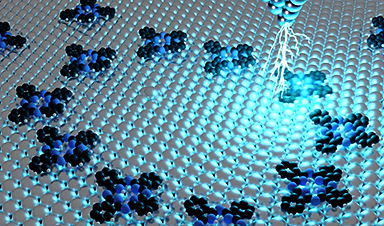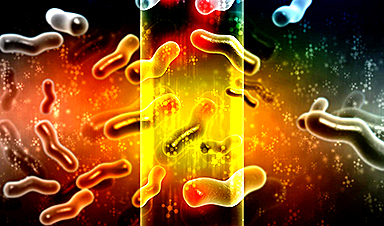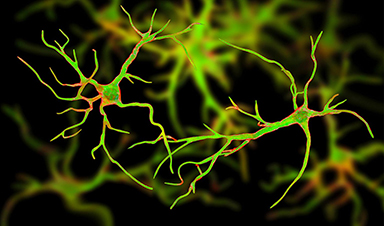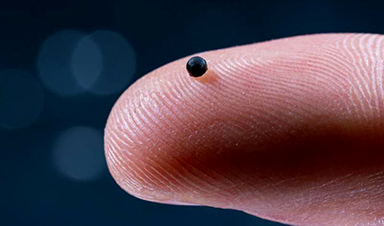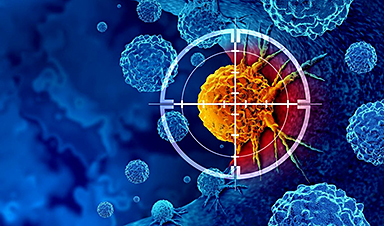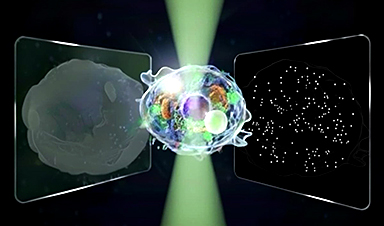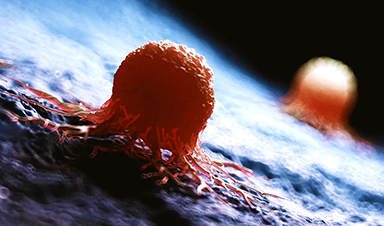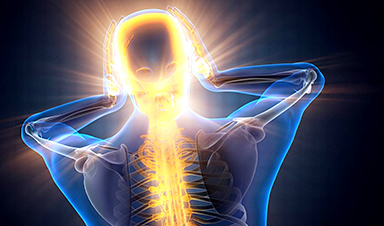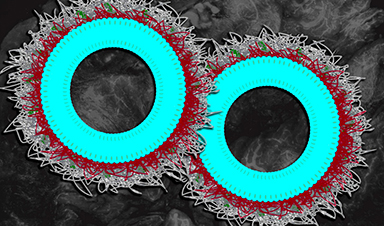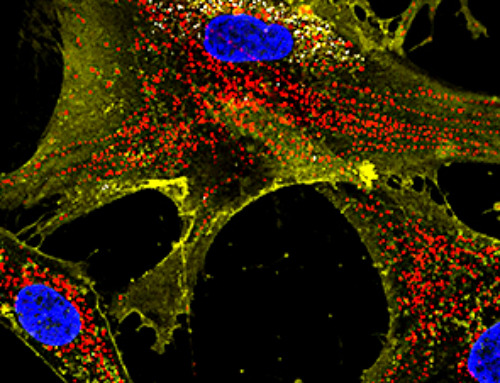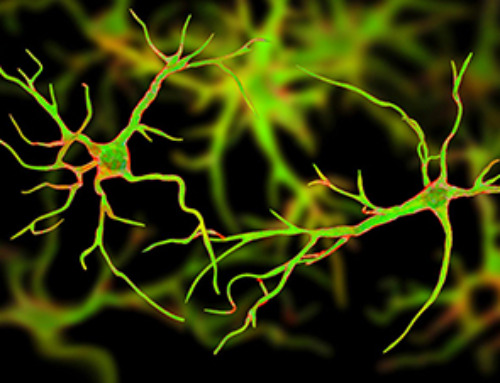At TU Graz, a pioneering research group is leveraging artificial intelligence to drastically enhance the way nanostructures are constructed.
They aim to develop a self-learning AI system that can autonomously position molecules with unprecedented precision, potentially revolutionizing the creation of complex molecular structures and quantum corrals for advanced electronics.
Revolutionizing Nanostructure Construction with AI
The properties of a material are often shaped less by its chemical composition and more by how its molecules are arranged within the atomic lattice or on its surface. Materials scientists harness this principle by positioning individual atoms and molecules on surfaces using high-performance microscopes. However, this process is highly time-consuming, and the resulting nanostructures remain relatively simple.
A research group at TU Graz aims to revolutionize this approach with artificial intelligence. "We want to develop a self-learning AI system that positions individual molecules quickly, specifically and in the right orientation, and all this completely autonomously," says Oliver Hofmann from the Institute of Solid State Physics, who heads the research group. This advancement could enable the construction of highly complex molecular structures, including nanoscale logic circuits.
The research group, called "Molecule Arrangement through Artificial Intelligence," has secured €1.19 million ($1.23 million) in funding from the Austrian Science Fund to turn this vision into reality
Advanced Techniques in Molecular Positioning
The positioning of individual molecules on a material's surface is carried out using a scanning tunneling microscope. The tip of the probe emits an electrical impulse to deposit a molecule it is carrying. "A person needs a few minutes to complete this step for a simple molecule," says Oliver Hofmann. "But in order to build complicated structures with potentially exciting effects, many thousands of complex molecules have to be positioned individually and the result then tested. This of course takes a relatively long time."
AI Integration for Enhanced Precision
However, a scanning tunneling microscope can also be controlled by a computer. Oliver Hofmann's team now wants to use various machine learning methods to get such a computer system to place the molecules in the correct position independently. First, AI methods are used to calculate an optimal plan that describes the most efficient and reliable approach to building the structure. Self-learning AI algorithms then control the probe tip to place the molecules precisely according to the plan.
"Positioning complex molecules at the highest precision is a difficult process, as their alignment is always subject to a certain degree of chance despite the best possible control," explains Hofmann. The researchers will integrate this conditional probability factor into the AI system so that it still acts reliably.
The Future of Quantum Corrals
Using an AI-controlled scanning tunneling microscope that can work around the clock, the researchers ultimately want to build so-called quantum corrals. These are nanostructures in the shape of a gate, which can be used to trap electrons from the material on which they are deposited. The wave-like properties of the electrons then lead to quantum-mechanical interferences that can be utilized for practical applications. Until now, quantum corrals have mainly been built from single atoms.
Oliver Hofmann's team now wants to produce them from complex-shaped molecules: "Our hypothesis is that this will allow us to build much more diverse quantum corrals and thus specifically expand their effects." The researchers want to use these more complex quantum corrals to build logic circuits in order to fundamentally study how they work at the molecular level. Theoretically, such quantum corrals could one day be used to build computer chips.
Collaborative Research and Expertise Synergy
For its five-year program, the research group is pooling expertise from the fields of artificial intelligence, mathematics, physics, and chemistry. Bettina Könighofer from the Institute of Information Security is responsible for the development of the machine learning model. Her team must ensure that the self-learning system does not inadvertently destroy the nanostructures it constructs.
Jussi Behrndt from the Institute of Applied Mathematics will determine the fundamental properties of the structures to be developed on a theoretical basis, while Markus Aichhorn from the Institute of Theoretical Physics will translate these predictions into practical applications. Leonhard Grill from the Institute of Chemistry at the University of Graz is primarily responsible for the real experiments on the scanning tunneling microscope.
Reference: "MAM-STM: A software for autonomous control of single moieties towards specific surface positions" by Bernhard Ramsauer, Johannes J. Cartus and Oliver T. Hofmann, 6 June 2024, Computer Physics Communications.
DOI: 10.1016/j.cpc.2024.109264
News
Multifunctional Nanogels: A Breakthrough in Antibacterial Strategies
Antibiotic resistance is a growing concern - from human health to crop survival. A new study successfully uses nanogels to target and almost entirely inhibit the bacteria P. Aeruginosa. Recently published in Angewandte Chemie, the study [...]
Nanoflowers rejuvenate old and damaged human cells by replacing their mitochondria
Biomedical researchers at Texas A&M University may have discovered a way to stop or even reverse the decline of cellular energy production—a finding that could have revolutionary effects across medicine. Dr. Akhilesh K. Gaharwar [...]
The Stunning New Push to Protect the Invisible 99% of Life
Scientists worldwide have joined forces to build the first-ever roadmap for conserving Earth’s vast invisible majority—microbes. Their new IUCN Specialist Group reframes conservation by elevating microbial life to the same urgency as plants and [...]
Scientists Find a Way to Help the Brain Clear Alzheimer’s Plaques Naturally
Scientists have discovered that the brain may have a built-in way to fight Alzheimer’s. By activating a protein called Sox9, researchers were able to switch on star-shaped brain cells known as astrocytes and turn them into [...]
Vision can be rebooted in adults with amblyopia, study suggests
Temporarily anesthetizing the retina briefly reverts the activity of the visual system to that observed in early development and enables growth of responses to the amblyopic eye, new research shows. In the common vision [...]
Ultrasound-activated Nanoparticles Kill Liver Cancer and Activate Immune System
A new ultrasound-guided nanotherapy wipes out liver tumors while training the immune system to keep them from coming back. The study, published in Nano Today, introduces a biodegradable nanoparticle system that combines sonodynamic therapy and cell [...]
Magnetic nanoparticles that successfully navigate complex blood vessels may be ready for clinical trials
Every year, 12 million people worldwide suffer a stroke; many die or are permanently impaired. Currently, drugs are administered to dissolve the thrombus that blocks the blood vessel. These drugs spread throughout the entire [...]
Reviving Exhausted T Cells Sparks Powerful Cancer Tumor Elimination
Scientists have discovered how tumors secretly drain the energy from T cells—the immune system’s main cancer fighters—and how blocking that process can bring them back to life. The team found that cancer cells use [...]
Very low LDL-cholesterol correlates to fewer heart problems after stroke
Brigham and Women's Hospital's TIMI Study Group reports that in patients with prior ischemic stroke, very low achieved LDL-cholesterol correlated with fewer major adverse cardiovascular events and fewer recurrent strokes, without an apparent increase [...]
“Great Unified Microscope” Reveals Hidden Micro and Nano Worlds Inside Living Cells
University of Tokyo researchers have created a powerful new microscope that captures both forward- and back-scattered light at once, letting scientists see everything from large cell structures to tiny nanoscale particles in a single shot. Researchers [...]
Breakthrough Alzheimer’s Drug Has a Hidden Problem
Researchers in Japan found that although the Alzheimer’s drug lecanemab successfully removes amyloid plaques from the brain, it does not restore the brain’s waste-clearing system within the first few months of treatment. The study suggests that [...]
Concerning New Research Reveals Colon Cancer Is Skyrocketing in Adults Under 50
Colorectal cancer is striking younger adults at alarming rates, driven by lifestyle and genetic factors. Colorectal cancer (CRC) develops when abnormal cells grow uncontrollably in the colon or rectum, forming tumors that can eventually [...]
Scientists Discover a Natural, Non-Addictive Way To Block Pain That Could Replace Opioids
Scientists have discovered that the body can naturally dull pain through its own localized “benzodiazepine-like” peptides. A groundbreaking study led by a University of Leeds scientist has unveiled new insights into how the body manages pain, [...]
GLP-1 Drugs Like Ozempic Work, but New Research Reveals a Major Catch
Three new Cochrane reviews find evidence that GLP-1 drugs lead to clinically meaningful weight loss, though industry-funded studies raise concerns. Three new reviews from Cochrane have found that GLP-1 medications can lead to significant [...]
How a Palm-Sized Laser Could Change Medicine and Manufacturing
Researchers have developed an innovative and versatile system designed for a new generation of short-pulse lasers. Lasers that produce extremely short bursts of light are known for their remarkable precision, making them indispensable tools [...]
New nanoparticles stimulate the immune system to attack ovarian tumors
Cancer immunotherapy, which uses drugs that stimulate the body’s immune cells to attack tumors, is a promising approach to treating many types of cancer. However, it doesn’t work well for some tumors, including ovarian [...]
